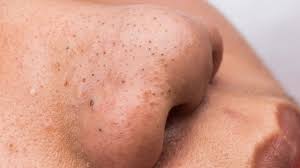Blackheads are one of the most common skin concerns—especially in the T-zone (nose, chin, and forehead). Though they’re harmless, they can be frustrating, persistent, and difficult to manage if not treated correctly. The good news is, you don’t need harsh products or painful extractions to deal with them.
In this article, you’ll learn how to treat blackheads naturally and gently, what causes them, and how to prevent them from coming back—with simple and affordable skincare habits.
What Are Blackheads?
Blackheads (open comedones) form when pores become clogged with:
- Excess oil (sebum)
- Dead skin cells
- Dirt or product buildup
When the contents of the pore are exposed to air, they oxidize and turn black. They are not caused by dirt alone, and scrubbing won’t remove them.
Common Causes of Blackheads
- Overproduction of oil
- Inconsistent cleansing
- Using pore-clogging makeup or skincare
- Hormonal fluctuations
- High humidity or sweating
- Poor exfoliation habits
Understanding the root cause can help guide your treatment approach.
Step 1: Use a Gentle, Non-Comedogenic Cleanser
Cleansing helps remove oil and impurities before they clog your pores.
Look for:
- Gel or foam cleansers
- Salicylic acid (BHA) for deep pore cleansing
- Fragrance-free, pH-balanced formulas
Cleanse twice a day—morning and night—and after sweating.
Step 2: Exfoliate Regularly (But Not Aggressively)
Exfoliation helps prevent dead skin cells from building up and clogging pores.
Best options:
- Salicylic acid (BHA): dissolves oil and clears inside the pores
- Lactic acid (AHA): exfoliates surface dead skin
- Enzyme exfoliants: gentle for sensitive skin
Use exfoliants 2–3 times per week max. Avoid physical scrubs with large particles, which can irritate and worsen blackheads.
Step 3: Try Natural Clay Masks
Clay masks help absorb excess oil and purify the pores.
Use once or twice a week. Look for:
- Kaolin clay: gentle and suitable for sensitive skin
- Bentonite clay: more absorbent, ideal for oily areas
- Charcoal: helps pull impurities from the skin
Always follow with a hydrating product afterward.
Step 4: Apply Non-Oily Moisturizer
Skipping moisturizer can make your skin overcompensate by producing more oil.
Choose:
- Lightweight gel moisturizers
- Formulas labeled “non-comedogenic”
- Ingredients like hyaluronic acid, niacinamide, or panthenol
Apply after cleansing and exfoliating to balance the skin.
Step 5: Spot Treat (When Needed)
For stubborn blackheads, use:
- A dab of salicylic acid gel
- Clay mask patches
- Tea tree oil (natural antibacterial, but always diluted)
Avoid squeezing or picking—this can lead to irritation and scarring.
Step 6: Keep Your Environment Clean
- Change pillowcases every 2–3 days
- Clean your phone screen regularly
- Wash your hands before touching your face
- Remove makeup thoroughly every night
A clean environment helps reduce bacteria and buildup that contribute to clogged pores.
Step 7: Be Consistent and Patient
Blackheads don’t disappear overnight. Stick to a simple, consistent routine and avoid overloading your skin with too many treatments at once.
If your blackheads are persistent or worsening, consider seeing a dermatologist for professional extractions or prescriptions.
Natural Remedies (Use with Caution and Always Patch Test)
- Honey + cinnamon mask: antibacterial and anti-inflammatory
- Green tea toner: soothes skin and reduces oil
- Steaming: opens pores before applying a clay mask, but limit to once a week
Natural options can be helpful, but they must be used carefully to avoid irritation.
Final Thought: Clear Skin Comes from Balance, Not Force
Blackheads are normal—and manageable. The key is not harsh scrubbing or squeezing, but a consistent, gentle routine that keeps your pores clear and your skin barrier healthy.
Treat your skin kindly, and it will gradually become smoother, clearer, and more radiant—naturally.
